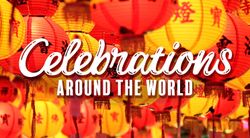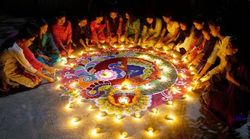Oct 26, 2024
RRAVENCLAW READING 3


.

HALLOWEEN
Halloween is a very special celebration that many people enjoy. It happens on October 31st every year. On this night, many children and adults wear costumes. They become different characters like witches, ghosts, or superheroes!
People **ARRANGE** parties and fun events to celebrate Halloween. These events can **ATTRACT** families and friends. Everyone comes together to enjoy the spooky atmosphere. Some people choose to host their parties at home, while others may go out to local events. It is always **AGREEABLE** to gather with loved ones and share in the fun.
During Halloween, children love to go door to door and say, "Trick or treat!" This activity can **CAUSE** excitement in the neighborhood. People decorate their homes with pumpkins and scary decorations. It is important for homeowners to be safe and not be **CARELESS** with their decorations. Lights and candles can be dangerous if left unattended. In some places, Halloween celebrations are big, especially near the **COAST**. The nice **CLIMATE** helps people enjoy the outdoors. However, some people may **ARGUE** that Halloween can be too scary for young children. Others feel that it is just a fun way to celebrate and should not be scary at all.
Some families even invite their friends over to **ASSIST** with creating fun decorations. They might carve pumpkins and make treats together. These **ADDITIONAL** activities make the celebration even more fun! In conclusion, Halloween is a time for fun, costumes, and sweet treats! It brings people together and creates wonderful memories. Whether you love it or find it a bit too spooky, Halloween is a celebration that many look forward to every year!

THANKSGIVING
Thanksgiving is a beloved holiday that many families celebrate every year. It is a time to give thanks for what we have and to enjoy a big meal with family and friends. In the United States, Thanksgiving is celebrated on the fourth Thursday of November.
During Thanksgiving, families often **DESCRIBE** what they are thankful for. They may share stories about the past year and express their gratitude for their loved ones. It is interesting to **COMPARE** Thanksgiving celebrations in different countries and regions. Although the holiday started in the United States, many other countries celebrate it too, but with their unique **CULTURE** and traditions. As families gather around the table, they enjoy delicious foods like turkey, stuffing, and pumpkin pie. It's important to include all the **DETAILS** in the meal, making it special for everyone. Some families even try to **CONSTRUCT** new recipes each year to keep things exciting.
When we **CONTRAST** Thanksgiving celebrations, we can see how cultures differ. Some people might prefer a large meal, while others enjoy smaller gatherings. No matter how we celebrate, the spirit of being thankful remains the same.Sometimes, children like to **DANGLE** their feet off the chairs at the dinner table while waiting for dessert. This playful behavior adds joy to the occasion! Adults often **DEFEND** the importance of family time during this holiday. They remind everyone that it is a chance to reconnect and enjoy each other's company.
We should also **CREDIT** the first Thanksgiving to the Pilgrims and the Native Americans. They came together to celebrate the harvest and shared a meal in peace. This event is an important part of American history. In conclusion, Thanksgiving is a beautiful tradition that brings people together. No matter where we celebrate, it is a special time to reflect on our blessings and to share love and gratitude with those around us!

Christmas is a special holiday celebrated on December 25th all around the world. It is a time filled with joy, love, and giving, and many people look forward to this **EVENT** each year. The roots of Christmas come from both religious and cultural traditions, leading to a **DIVISION** in how it is celebrated in different communities. As Christmas gets closer, families often **DEVELOP** their own unique traditions. Some might decorate their homes with bright lights and ornaments, while others prefer a simpler look. A common **EXAMPLE** of a Christmas tradition is putting up a Christmas tree, which brings families together for a memorable time.
For many, the holiday season brings excitement and happiness. However, some might feel **DISAPPOINTED** if their Christmas celebrations don’t match their hopes. When we **EXAMINE** the effects of Christmas on society, we can see both good and bad sides. On the positive side, Christmas encourages kindness and giving, pushing people to help those who need it. But the pressure to buy gifts can also lead to stress and distract from the holiday’s true spirit. Over time, different Christmas customs have changed. One tradition is **ELECTING** a figure like "Santa Claus" in communities, who brings happiness to children. In some cultures, this role is played by other figures like Saint Nicholas or Father Christmas, showing the different ways people celebrate.
As we think about how Christmas is celebrated, we must also recognize that some traditions are becoming **ENDANGERED** because of commercialization and changes in society. Activities like caroling or going to midnight mass are not as common as they used to be. Lastly, it’s important to note that not everyone celebrates Christmas the same way. Many people from diverse backgrounds may join in the festivities based on their own **CULTURE** or beliefs, reflecting the wide variety of ways to honor this holiday.

EID
Eid, or Eid al-Fitr, marks the end of Ramadan, a month when Muslims around the world fast and reflect spiritually. This celebration is an important **EXPERIENCE** that brings families and communities together in joy and gratitude. During Eid, families and friends **GATHER** to celebrate with special meals, prayers, and acts of charity. The main idea, or **GIST**, of Eid is to thank Allah for the strength and patience shown during Ramadan. It is a time to **MEND** relationships, forgive old issues, and strengthen bonds of love and friendship.
However, sometimes celebrations can be affected by things outside our control. In places where there is conflict, Eid celebrations can become **FATAL** or dangerous. In these situations, the joy of Eid may be replaced by sadness, showing how strong communities can be even during tough times. Eid celebrations are often **FLEXIBLE**; they vary based on culture and local traditions. In some countries, the day begins with a special prayer called "Eid Salah" at the mosque, while others may use parks or other outdoor places for big gatherings. After prayers, it is common to visit family and friends, sharing food and gifts.
Despite the differences, the **INTELLIGENT** design of Eid promotes values like compassion, generosity, and community support. Acts of charity, known as "Zakat al-Fitr," are encouraged before Eid prayers so that everyone, including those who are less fortunate, can join in the celebrations. Many Eid celebrations also include traditional elements, like wearing special clothing or cooking specific dishes. In coastal areas, **MARINE** foods might be a big part of the festive meal, highlighting unique culinary traditions from different regions.
However, emotions can run high during such important celebrations. For some, the pressure to prepare for Eid can cause frustration or even make them feel **FURIOUS** if things don’t go perfectly. It's important to remember that Eid is not just about getting everything right, but about the love and connections we share with others.

VALENTINE
Valentine’s Day, celebrated on February 14th, has one main **PURPOSE**: to celebrate love and caring between partners, friends, and family. On this day, many people express their feelings through gestures like giving gifts or writing sweet notes. Valentine’s Day gets closer, people often **PREDICT** how their loved ones will react to their gestures. This can create a mix of excitement and **IRRITATION** because some might worry about whether their plans will meet expectations. Some individuals feel pressured to show big romantic gestures, while others prefer simple acts of kindness. This shows how different cultures and personal tastes can highlight love in their own special ways.
In many places, Valentine's Day includes **INVITATIONS** to romantic dinners or special events. Restaurants usually have special menus to attract couples who want to celebrate. However, some people think the holiday has become too commercial and feel it’s **RIDICULOUS** to make it a big deal. They debate whether celebrating love should be something everyone feels obligated to do or if it should be a personal choice. While it’s mainly seen as a day for couples, it’s important to **RECOGNIZE** that love comes in different forms. Friends and family also exchange cards and gifts, highlighting the importance of their relationships. This helps expand the meaning of the holiday beyond just romance, allowing more people to join in the celebration.
Despite the happy aspects of the day, some people carry **SCARS** from past experiences related to Valentine’s Day. Things like broken hearts, loneliness, or one-sided feelings can make the day uncomfortable for some. Those who feel this way might choose to avoid the festivities or spend the time focusing on self-care and healing. Critics of the holiday say that the expectations surrounding Valentine's Day can make love feel less genuine, turning real feelings into mere checklists. On the other hand, supporters argue that the day is a chance to strengthen connections that might otherwise be overlooked.
NEW YEAR
New Year’s Eve and New Year’s Day are celebrated around the world, marking the end of one year and the **PASSAGE** into the next. This transition often brings a mix of excitement and worry. As the clock gets closer to midnight, some people feel **NERVOUS** about what the new year will bring, while others look forward to it with hope and excitement. Traditionally, celebrations start on New Year’s Eve, when friends and families **GATHER** to count down the last moments of the year. These gatherings can vary a lot, from quiet dinners to huge parties. One popular custom is making resolutions—people plan to **MULTIPLY** their efforts to reach personal goals or improve their lives, whether in health, work, or relationships.
The feeling during New Year celebrations can be quite **PLEASANT**, filled with laughter and joy as loved ones share memories from the past year. However, some may also feel an **OPPOSITE** emotion, especially those reflecting on challenges or losses they faced last year. This mix of feelings shows the complex nature of the celebrations. In the spirit of fun, many people enjoy light-hearted **PRANKS** on New Year’s Eve. These playful acts can brighten the atmosphere and create fun memories, but it's important for everyone to stay **PATIENT**, especially when pranks don’t go as planned or if they lead to surprises. On the other hand, some might feel pressure from their **PEERS** to join in on big celebrations. This social pressure can affect how people celebrate and may create anxiety about keeping up with trends or expectations. It’s crucial for everyone to understand that there is no single "right" way to celebrate the New Year, and to do what feels comfortable for them.
As midnight nears, a sense of unity often **OCCURS** as friends and family come together for the countdown.. While the excitement is strong, it’s also important to **PERSUADE** oneself to reflect on the past year during these celebrations.

DIWALI
Diwali is a special festival known as the Festival of Lights. It is celebrated by many people, especially in India. During Diwali, families and friends come together to celebrate the victory of good over evil. This celebration has many **UNUSUAL** traditions that make it fun and exciting. One important part of Diwali is how it helps people **UNITE**. Families clean their homes and decorate them with lights and colorful flowers. They get together to make and share tasty sweets and food, which makes everyone feel happy and close.
The stories and traditions of Diwali are **VALUABLE**. They teach us about kindness and hope. For example, during Diwali, people light small oil lamps called diyas . These lights symbolize the victory of light over darkness, reminding us that there is always hope, even in tough times. Many people also like to **VOLUNTEER** during Diwali. They help others by giving food, clothes, or their time. This act of kindness makes the festival even more special and helps those who need support.
The bright lights and decorations serve as a **VEHICLE** for joy. Fireworks and twinkling lamps create a beautiful and exciting atmosphere, filling the air with happiness and celebration. In conclusion, Diwali is a wonderful festival filled with **UNUSUAL** traditions that help people **UNITE**. It teaches us the **VALUABLE** lessons of kindness and hope. By helping others and celebrating together, Diwali brings joy to everyone!
APRIL FOOL
April Fool's Day, celebrated on April 1st, is a day filled with **TYPICAL** jokes and pranks that are meant to make people laugh. This holiday is all about having fun and being playful, signaling the arrival of spring when everything begins to wake up from its **SLUMBER**.
On this day, people often **STUMBLE** upon funny tricks, which can range from simple jokes to elaborate pranks. While some may find these pranks amusing, others might find them a bit shocking, which can make them **SHIVER** with surprise or embarrassment. So, it’s important to keep pranks light-hearted and friendly.
Those who love April Fool's Day say it’s a great way to **TACKLE** everyday stress and enjoy a good laugh. It can help bring friends and families closer as they share in the fun of silly tricks. After all, laughter is good for everyone!
However, some people worry that not all pranks are harmless. If a prank goes too far, it can hurt feelings instead of making people laugh. It's crucial to think before trying out a joke to ensure it is safe and fun for everyone involved.
There are also **SIMILAR** celebrations around the world where people joke and play around, like in France, where they tape a paper fish to someone’s back as part of their version of April Fool's Day.







By undefined
24 notes ・ 9 views
Indonesian
Beginner